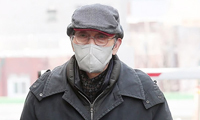I haven’t thought much about him in years. But Jenner is in the news again, widely reported to be preparing to come out as a transgender woman.
At first, there were snickers, but, lately, the tone has been respectful. And news reports say Jenner is planning to chronicle the transition in a program for E! television channel and in an interview with Diane Sawyer for ABC News. All this, and comments by family members, suggest that Jenner is willing to be a role model and help educate the world on transgender issues.
Radar Online quoted his mother, Esther Jenner, as confirming the news and saying she was prouder of him now than when he won his gold medal. His stepdaughter, Kim Kardashian, told “Entertainment Tonight” that it was Jenner’s story to tell but added: “I think he’ll share whenever the time is right.”
Good for Jenner. All this is probably harder than the training for the Olympic decathlon . but more important, because transgender people face hate crimes and discrimination at an astonishing rate.
Remember Matthew Shepard, the 21-year-old gay university student in Wyoming who in 1998 was tied to a fence, badly beaten and left to die? That was seen as the ultimate hate crime and now seems to belong to a different era.
Yet, just so far this year, at least three transgender people have been reported murdered in the United States. The Human Rights Campaign issued a report the other day listing 13 transgender women murdered in 2014: They were shot, strangled, burned and beaten.
“Violence is something that is disproportionately affecting transgender people . and for specific reasons,” says Elizabeth Halloran of the Human Rights Campaign. “Inability to access employment, housing and safety-net services, as well as family rejection, all conspire to create a reality that makes transgender people . especially transgender people of color, transgender women and transgender people living poverty . more vulnerable to violence.”
Vincent Paolo Villano of the National Center for Transgender Equality said that there has been progress in laws protecting transgender Americans, but that public attitudes remain a problem.
Sex and gender are such befuddling mysteries even for those of us who are in the mainstream that you’d think we’d be wary of being judgmental. Yet much of society clings to a view that gender is completely binary, when, in fact, there’s overwhelming evidence of a continuum.
And considering the violence and discrimination that transgender people endure, no one would go through this except for the most profound of motivations: to be authentic to one’s inner self.
A 2011 survey by the National Gay and Lesbian Task Force found that 57 percent of transgender people interviewed reported significant family rejection. Partly because of widespread job discrimination, they were often impoverished, and almost one-fifth had been homeless. And 41 percent reported having attempted suicide.
“Gender needs to be taught about in schools,” Leelah Alcorn, a transgender 17-year-old who had been sent to conversion therapy by her parents, wrote in a suicide note when she killed herself last year. “Fix society. Please.”
Gays and lesbians began to gain civil rights when Americans realized that their brothers, cousins, daughters were gay. Numbers are elusive, but research at the University of California at Los Angeles suggests that while 3.5 percent of American adults identify as gay, only 0.3 percent are transgender.
Jay Brown, a transgender man who has written an excellent online guide to how the public can support those transitioning, notes that 65 percent of Americans say they have a family member or close friend who is gay, compared with only 9 percent who have such a connection to someone who is transgender.
Yet there are signs of a real opening, with TV shows dealing with transgender issues, Vice President Joe Biden referring to transgender discrimination as “the civil rights issue of our time,” and President Obama mentioning transgender people in his State of the Union address last month.
That’s the context in which Jenner is now stepping forward. If the aim is to educate us, bravo!
Cynics might say that the television plans are more about self-promotion than leadership. All I know is that Jenner seems to be preparing for a bold public mission involving something intensely personal, in a way that should open minds and hearts. So, in my book, Bruce Jenner is now a gold medalist again. Come on, Wheaties. It’s time to put Jenner back on the box!
스마터리빙
more [ 건강]
[ 건강]이제 혈관 건강도 챙기자!
[현대해운]우리 눈에 보이지 않기 때문에 혈관 건강을 챙기는 것은 결코 쉽지 않은데요. 여러분은 혈관 건강을 유지하기 위해 어떤 노력을 하시나요?
 [ 건강]
[ 건강]내 몸이 건강해지는 과일궁합
 [ 라이프]
[ 라이프]벌레야 물럿거라! 천연 해충제 만들기
 [ 건강]
[ 건강]혈압 낮추는데 좋은 식품
[현대해운]혈관 건강은 주로 노화가 진행되면서 지켜야 할 문제라고 인식되어 왔습니다. 최근 생활 패턴과 식생활의 변화로 혈관의 노화 진행이 빨라지고
사람·사람들
more많이 본 기사
- 아이폰 있으면 국내선 여권 불필요
- 메디케이드·식량·주거 보조 이용… 영주권 ‘불이익’
- 한인 마켓도 덮친 ‘대대적 이민 단속’
- 팽팽한 피부·부푼 입술… “워싱턴 대세 성형스타일은 ‘마가 여성’”
- [화제] 동명이인도 ‘깜짝’ … 스크래치 100만달러 잭팟
- 고개 숙인 일본, 주머니에 손 넣은 중국
- “티켓은 비자아냐”
- 한인타운 올림픽·버몬트 총격 사건
- ‘트럼프 신속대응팀’ 비판에 연방 법무부 내부 ‘흔들’
- 의회, ‘엡스타인 파일 공개 법안’ 가결…트럼프 서명만 남아
- 푸드스탬프 재신청 의무화 추진 300여만명 식비지원 상실 위기
- AI 확산에 올해 일자리 110만개 사라져
- 영국 학교, 케데헌 ‘금지령’… “기독교와 맞지 않아”
- LA 곳곳 ‘폭우 후유증’… 타운도 팟홀 몸살
- ‘함께하는 연말의 따뜻한 기적’… “싱글맘 가정에 희망을”
- 뉴저지 어린이 합창단, 타임스퀘어 물들였다
- 대만, 첨단반도체 통제 “사전 허가받아야 수출”
- 홍명보호, 가나에 1-0 승리로 유종의 미… 내용은 아쉬워
- 한국·캔자스 운전면허 상호인정… 가주는 ‘깜깜’
- 한인은행 수익률… LA 카운티 은행 중위권 그쳐
- 이젠 프리웨이도 달리는 웨이모
- 김&리 회계법인, 업무협약 체결
- 이탈리아 축구, 3회 연속 월드컵 본선 탈락 위기 ‘악몽’
- 챗GPT·X 등 한때 접속 불통 사태
- “무너진 캘리포니아 재건하겠다”
- 신규 유학생 17% 급감… 트럼프 비자정책 ‘역풍’
- “소득대비 과도 공제… IRS 감사타겟 될 수도”
- 성범죄자에 ‘불륜 상담’ 하버드 전총장 활동중단
- ‘트럼프 가자 평화구상’ 유엔 안보리 통과
- 데이터센터 건설 열풍 속…미국 겨울철… 1
- 사라진 백악관의 이스트 윙
- 디트로이트, 18년 만에 10연승 ‘신바람’
- ‘호객 없는 수산시장’… 제철 맞은 방어, 새우 먹으러 울진 간다
- ‘유아인과 대마흡연’ 혐의 유튜버 2심 집행유예
- 비트코인 9만달러 붕괴 최고치 대비 29% 하락
- 소비 양극화… 저소득층 패스트푸드도 못가
- [인터뷰] “원스톱 협진케어… 온 가족 누리는 진료 제공 보람”
- 홈디포, 실적 하향 ‘소비 둔화 경고음’
- [경제 트렌드] “거스름 줄 동전이 없어”… 1센트 폐지 혼란
- 로봇시대 게임체인저… K원팀으로 100조시장 뚫는다
- 검찰 물갈이, 중앙지검장 박철우·반부패 주민철… “안정·쇄신”
- 맥도널드, 연말 인기메뉴 ‘맥립’ 출시
- 현대차, 러시아 복귀하나… “현지 상표 등록”
- K전력기기 ‘빅4(HD현대일렉·효성중·LS일렉·일진전기)’ 수주 33조 돌파… 5년치 일감 따냈다
- [송년모임] 충청 향우회 내달 4일
- 트럼프, 공화 장악력 약화… ‘셧다운 핵옵션·엡스타인’ 파열음
- “화장실에서 꼭 확인해라”… ‘이런 모양’ 변 계속 나온다면 대장암일 수도
- 우편 요금 내년 1월부터 또 오른다
- 교황, 트럼프 이민정책 거듭 비판… “극도로 멸시적인 대우”
- [만화경] ‘국부론’과 “기업이 곧 국력”
1/5지식톡

-
 테슬라 자동차 시트커버 장착
0
테슬라 자동차 시트커버 장착
0테슬라 시트커버, 사놓고 아직 못 씌우셨죠?장착이 생각보다 쉽지 않습니다.20년 경력 전문가에게 맡기세요 — 깔끔하고 딱 맞게 장착해드립니다!장착비용:앞좌석: $40뒷좌석: $60앞·뒷좌석 …
-
 식당용 부탄가스
0
식당용 부탄가스
0식당용 부탄가스 홀세일 합니다 로스앤젤레스 다운타운 픽업 가능 안녕 하세요?강아지 & 고양이 모든 애완동물 / 반려동물 식품 & 모든 애완동물/반려동물 관련 제품들 전문적으로 홀세일/취급하는 회사 입니다 100% …
-
 ACSL 국제 컴퓨터 과학 대회, …
0
ACSL 국제 컴퓨터 과학 대회, …
0웹사이트 : www.eduspot.co.kr 카카오톡 상담하기 : https://pf.kakao.com/_BEQWxb블로그 : https://blog.naver.com/eduspotmain안녕하세요, 에듀스팟입니다…
-
 바디프렌드 안마의자 창고 리퍼브 세…
0
바디프렌드 안마의자 창고 리퍼브 세…
0거의 새제품급 리퍼브 안마의자 대방출 한다고 합니다!8월 23일(토)…24일(일) 단 이틀!특가 판매가Famille: $500 ~ $1,000Falcon: $1,500 ~ $2,500픽업 & 배송직접 픽업 가능LA…
-
 바디프렌드 안마의자 창고 리퍼브 세…
0
바디프렌드 안마의자 창고 리퍼브 세…
0거의 새제품급 리퍼브 안마의자 대방출 한다고 합니다!8월 23일(토)…24일(일) 단 이틀!특가 판매가Famille: $500 ~ $1,000Falcon: $1,500 ~ $2,500픽업 & 배송직접 픽업 가능LA…
케이타운 1번가
오피니언
 정숙희 논설위원
정숙희 논설위원사라진 백악관의 이스트 윙
 파리드 자카리아 워싱턴포스트 칼럼니스트 / CNN ‘GPS’ 호스트
파리드 자카리아 워싱턴포스트 칼럼니스트 / CNN ‘GPS’ 호스트 계속되는 민주당의 헛손질
 김동찬 시민참여센터 대표
김동찬 시민참여센터 대표 [미국은 지금] 미국 정치의 파산과 그 댓가
 성영라 수필가 미주문협 부이사장
성영라 수필가 미주문협 부이사장 [수요 에세이] 부석사, 배흘림기둥에 기대어 보다
 서정명 / 서울경제 논설위원
서정명 / 서울경제 논설위원[만화경] ‘국부론’과 “기업이 곧 국력”
 노세희 부국장대우·사회부장
노세희 부국장대우·사회부장 대한은 다시 살아나는가
 민경훈 논설위원
민경훈 논설위원사자와 생쥐, 그리고 인간 이야기
 한형석 사회부 부장대우
한형석 사회부 부장대우 한인타운 교통 인프라 개선 기대
 박영실 시인·수필가
박영실 시인·수필가 [화요칼럼] 말의 위력
1/3지사별 뉴스

‘네이버 플러스’호스피스 자원봉사자 31명 배출
뉴저지 팰리세이즈팍에 위치한 비영리단체‘네이버 플러스’(Neighbor Plus·이사장 양춘길 목사)가 말기암 환자와 그 가족들을 돌보는 제4…
회장선거(뉴저지한인회) 놓고 내분사태 ‘악화일로’

“워싱턴교협 50년, 다음세대에 방향 제시하는 좌표”
“구슬이 서 말이라도 꿰어야 보배라는 말이 있다. 구슬을 꿰어 보배를 만들어 낸 편찬위원회에 감사하고, 지난 50년간 그 구슬을 만들어낸 여러…
장학생 20명 선정…장학금 총 3만불

사우디 빈살만 “1조달러 투자”…7년만의 방미환대 트럼프에 선물
사우디아라비아가 18일 대미 투자액을 기존에 발표했던 6천억 달러(약 876조원)에서 1조 달러(약 1천460조원) 규모로 상향 조정하기로 했…
방한후 美입국했다 석연찮게 구금된 한인과학자, 4개월만에 석방

오늘 하루 이 창 열지 않음 닫기 




















































.png)


댓글 안에 당신의 성숙함도 담아 주세요.
'오늘의 한마디'는 기사에 대하여 자신의 생각을 말하고 남의 생각을 들으며 서로 다양한 의견을 나누는 공간입니다. 그러나 간혹 불건전한 내용을 올리시는 분들이 계셔서 건전한 인터넷문화 정착을 위해 아래와 같은 운영원칙을 적용합니다.
자체 모니터링을 통해 아래에 해당하는 내용이 포함된 댓글이 발견되면 예고없이 삭제 조치를 하겠습니다.
불건전한 댓글을 올리거나, 이름에 비속어 및 상대방의 불쾌감을 주는 단어를 사용, 유명인 또는 특정 일반인을 사칭하는 경우 이용에 대한 차단 제재를 받을 수 있습니다. 차단될 경우, 일주일간 댓글을 달수 없게 됩니다.
명예훼손, 개인정보 유출, 욕설 등 법률에 위반되는 댓글은 관계 법령에 의거 민형사상 처벌을 받을 수 있으니 이용에 주의를 부탁드립니다.
Close
x